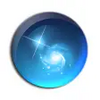Virtual telescope that allows you to view imagery from telescopes all over the world
Virtual telescope that allows you to view imagery from telescopes all over the world
Vote: (54 votes)
Program license: Free
Developer: Worldwidetelescope
Version: Beta
Works under: Windows
Vote:
Program license
(54 votes)
Free
Developer
Version
Worldwidetelescope
Beta
Works under:
Windows
Pros
- Highly detailed astronomical data and imagery
- Educational guided tours enhance learning
- Content regularly updated with current astronomical information
- Wide range of celestial objects and phenomena to explore
Cons
- Potentially steep learning curve for casual users
- High resource demand can affect performance on older systems
- Image gallery boundaries can disrupt the immersive experience
Explore the Cosmos with WorldWide Telescope
WorldWide Telescope (WWT) is an astronomical visualization tool that transforms your computer into a virtual telescope, providing access to an expansive universe of galaxies, stars, and planets. Unlike other space exploration applications, WWT stands out as a more data-rich and education-focused platform, making it an excellent resource for both professional astronomers and avid astronomy enthusiasts.
In-depth Celestial Exploration
What sets WorldWide Telescope apart is its commitment to depth of content. It allows users to delve into detailed space imagery, exploring celestial bodies and phenomena with precision. The application sources its data from various space-based telescopes and ground observations, offering a comprehensive view of the universe in multiple wavelengths. This level of detail ensures that users have a robust learning tool at their fingertips, with enough material to satisfy even the most discerning space science aficionados.
Educational Journeys Across the Galaxy
One of the cornerstone features of WWT is the inclusion of guided tours. These tours are downloadable within the application and serve as dynamic lessons on various astronomical subjects. Each tour is crafted to enrich your knowledge, whether you're investigating the lifecycle of stars or tracing the paths of known exoplanets. These narratives are not just educative; they are an immersive experience, with the narrations frequently contributed by professionals from the field of astronomy.
User Experience: A Mix of Complexity and Utility
Navigating the cosmos using WorldWide Telescope can be both rewarding and challenging. The freedom to move seamlessly across the night sky with a mouse and dive into areas of interest is empowering. However, beginners may find the interface to be less intuitive than expected, presenting a steep learning curve for casual users simply looking to admire celestial wonders.
This complexity is also evident in the image galleries found under the Explore menu. For all their informative value, they can sometimes disrupt immersion due to the evident boundaries between stitched images. While this does not detract from the wealth of information provided, it may affect the sensation of peering through a seamless panoramic telescope.
Performance and Specifications
As for performance, WorldWide Telescope is relatively stable, providing a smooth experience across many hardware configurations. However, due to the high-quality imagery and extensive data, the application can be resource-intensive. Users with less powerful systems may experience slower load times or reduced performance.
Furthermore, regular updates to the platform ensure that users have access to the latest data and imagery, which is essential for an application reliant on current astronomical information.
Conclusion: Navigating the Universe from Your Desktop
WorldWide Telescope is an astronomer's treasure trove, packed with high-quality, detailed space imagery and comprehensive educational content. It is an indispensable tool for users who crave a more profound understanding of the cosmos. While the user interface can present a challenge to newcomers, and the image galleries can sometimes break the illusion of a seamless cosmic panorama, the overall value of the platform for learning and exploration is undeniable.
Pros
- Highly detailed astronomical data and imagery
- Educational guided tours enhance learning
- Content regularly updated with current astronomical information
- Wide range of celestial objects and phenomena to explore
Cons
- Potentially steep learning curve for casual users
- High resource demand can affect performance on older systems
- Image gallery boundaries can disrupt the immersive experience



